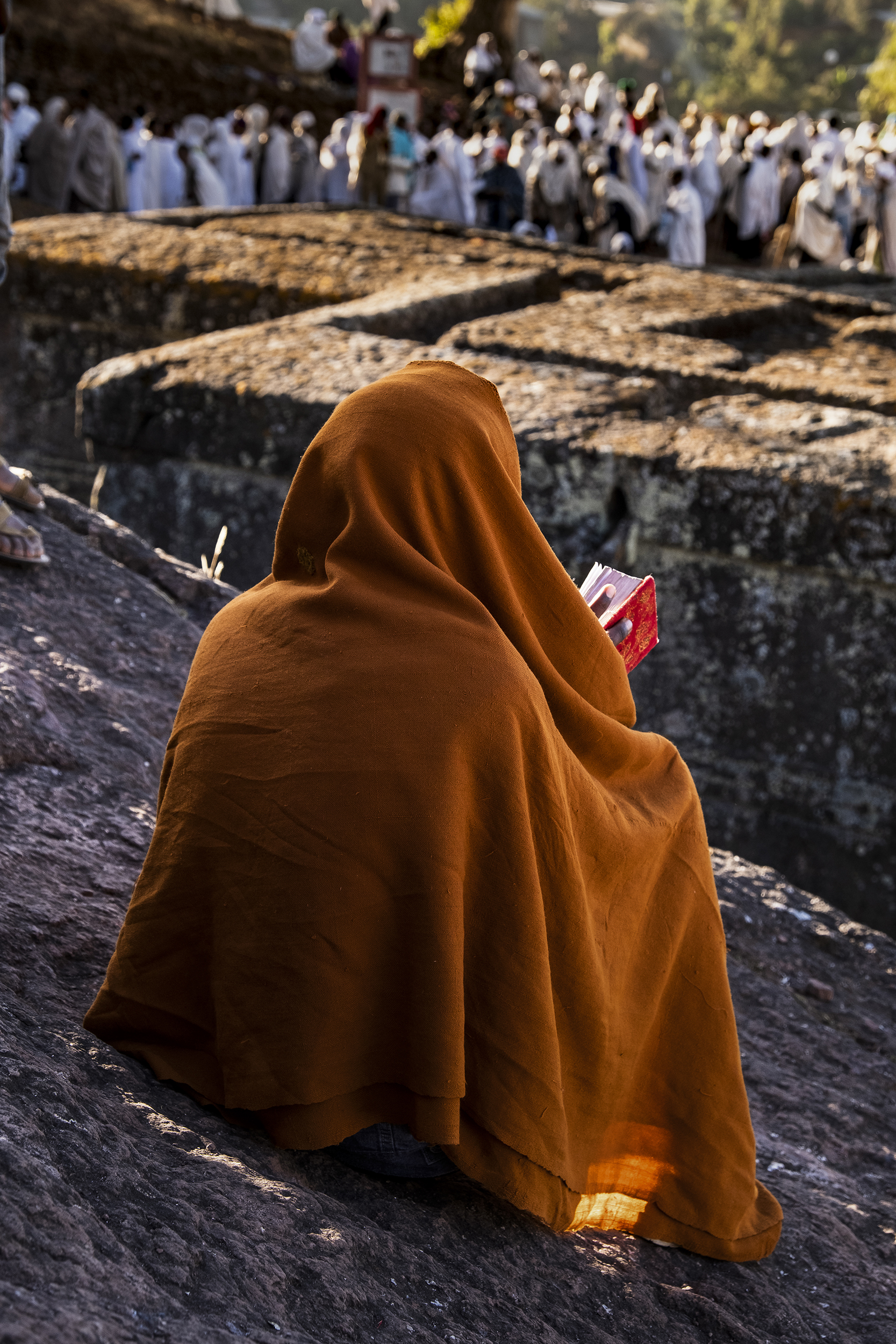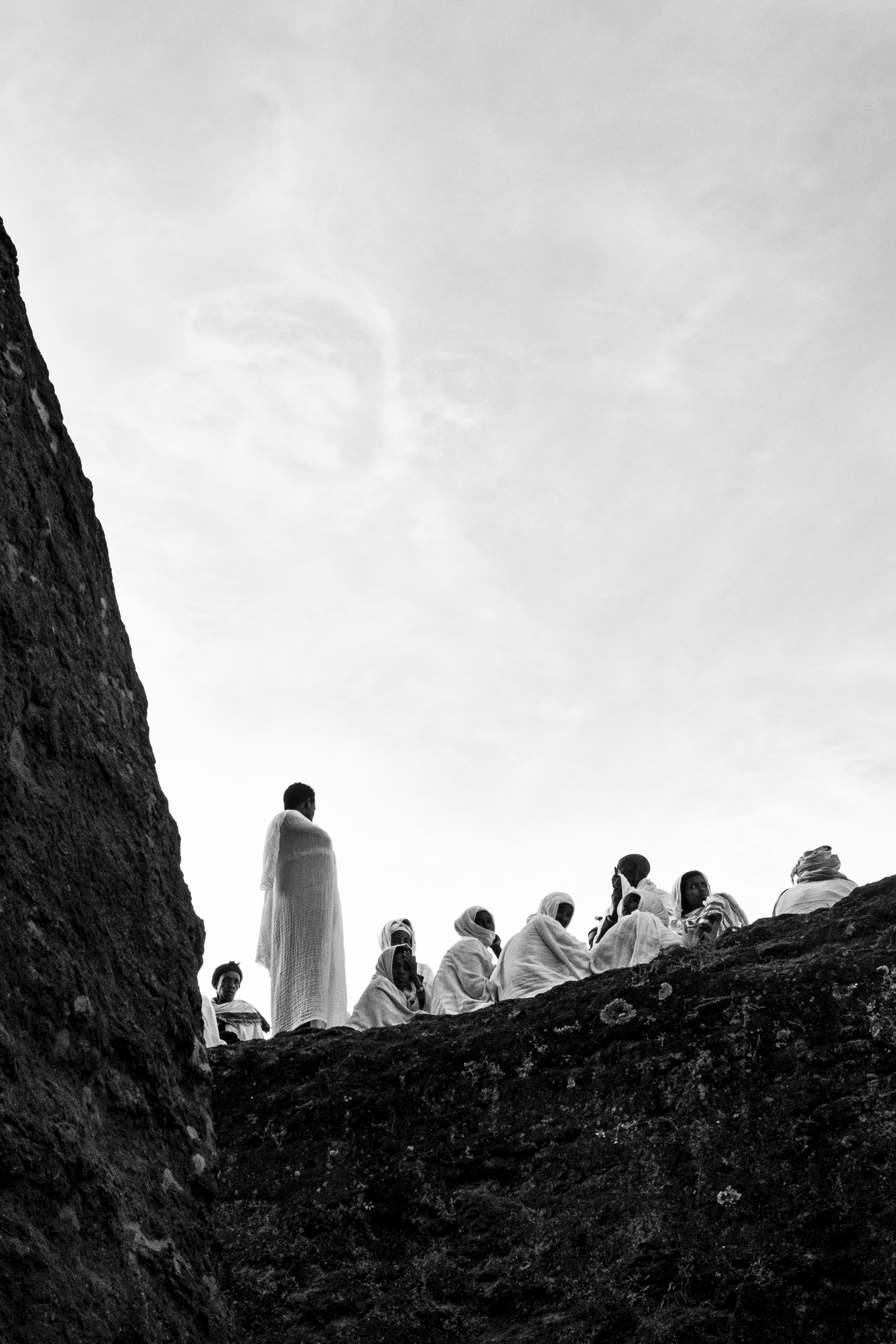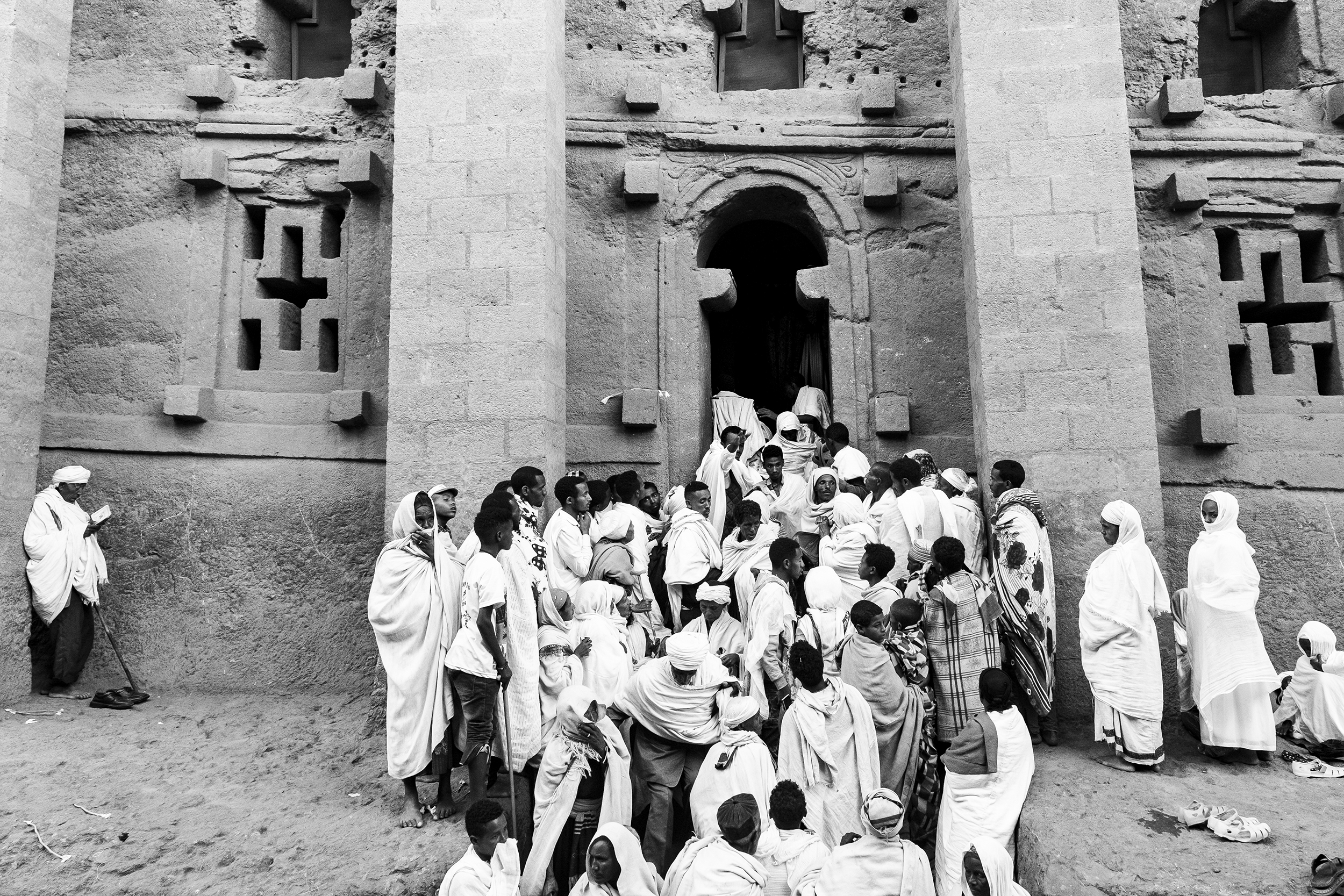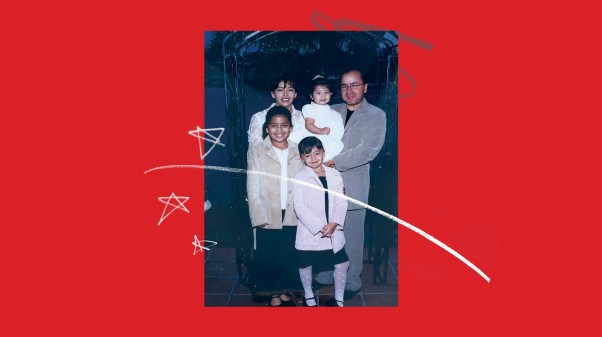Each January, as Christmas is observed on the Ethiopian Orthodox calendar, the population of the quiet highland town of Lalibela swells with thousands of pilgrims. They arrive from farming villages, market towns, bustling cities, and distant provinces—some walking for days or weeks along dusty roads and others arriving by bus before climbing the last steep miles on foot. All come for Genna, the celebration of Christ’s birth, and to worship at one of Ethiopia’s most revered holy sites.
Lalibela’s medieval churches, carved directly from volcanic rock in the 12th and 13th centuries under King Lalibela, were created as a “new Jerusalem” for those unable to travel to the Holy Land. Each is hewn as a monolith, and they are connected by narrow passageways, trenches, and dimly lit tunnels. The most iconic, Biete Ghiorgis, takes the form of a cross cut deep into the earth—its walls descending into shadow while its roof levels with the surrounding ground.
In the cool mountain air, pilgrims wrapped in white cotton shammas press into the complex’s winding entrances. They bow to kiss stone thresholds, kneel on uneven floors worn smooth by centuries of devotion, and gather in candlelit chambers where chants echo off carved walls. The rituals are both communal and personal—moments of reverence link them to prior generations.
For many, the pilgrimage is a rare journey away from the demands of life, a chance to gather with family, friends, and strangers in shared worship. Here, the Christmas story is not only told and preached from the mountainsides but also felt—in stone, in song, and in the footsteps of faith.
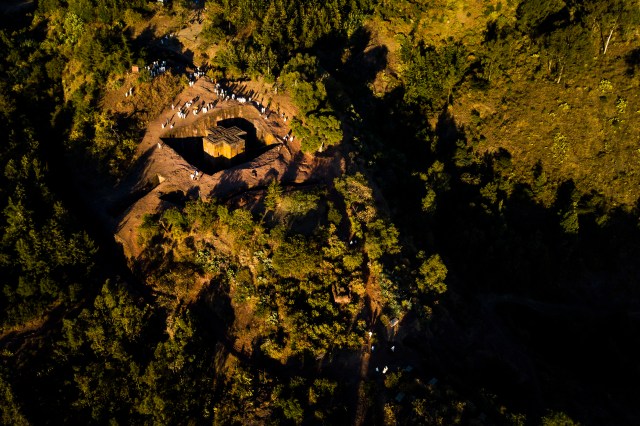 Photo by Andrew Faulkk
Photo by Andrew Faulkk
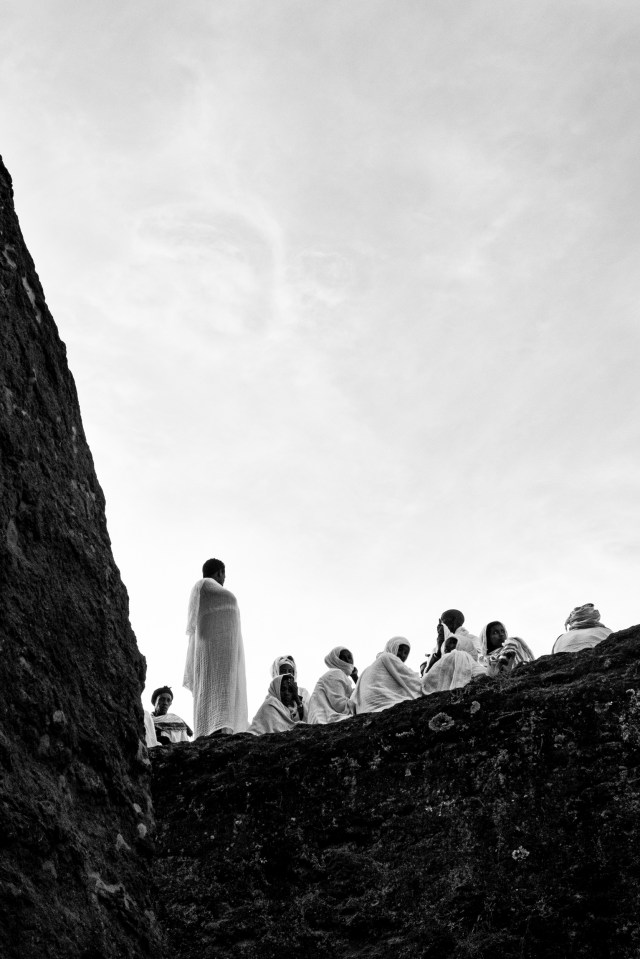
 Photo by Andrew Faulk
Photo by Andrew Faulk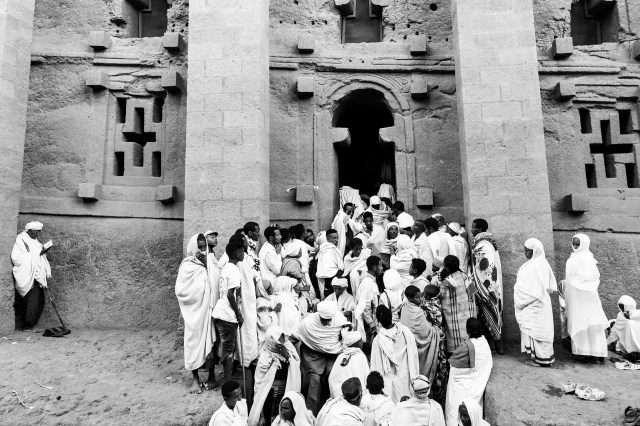 Photo by Andrew Faulk
Photo by Andrew Faulkthe largest of the monolithic churches in Lalibela.






